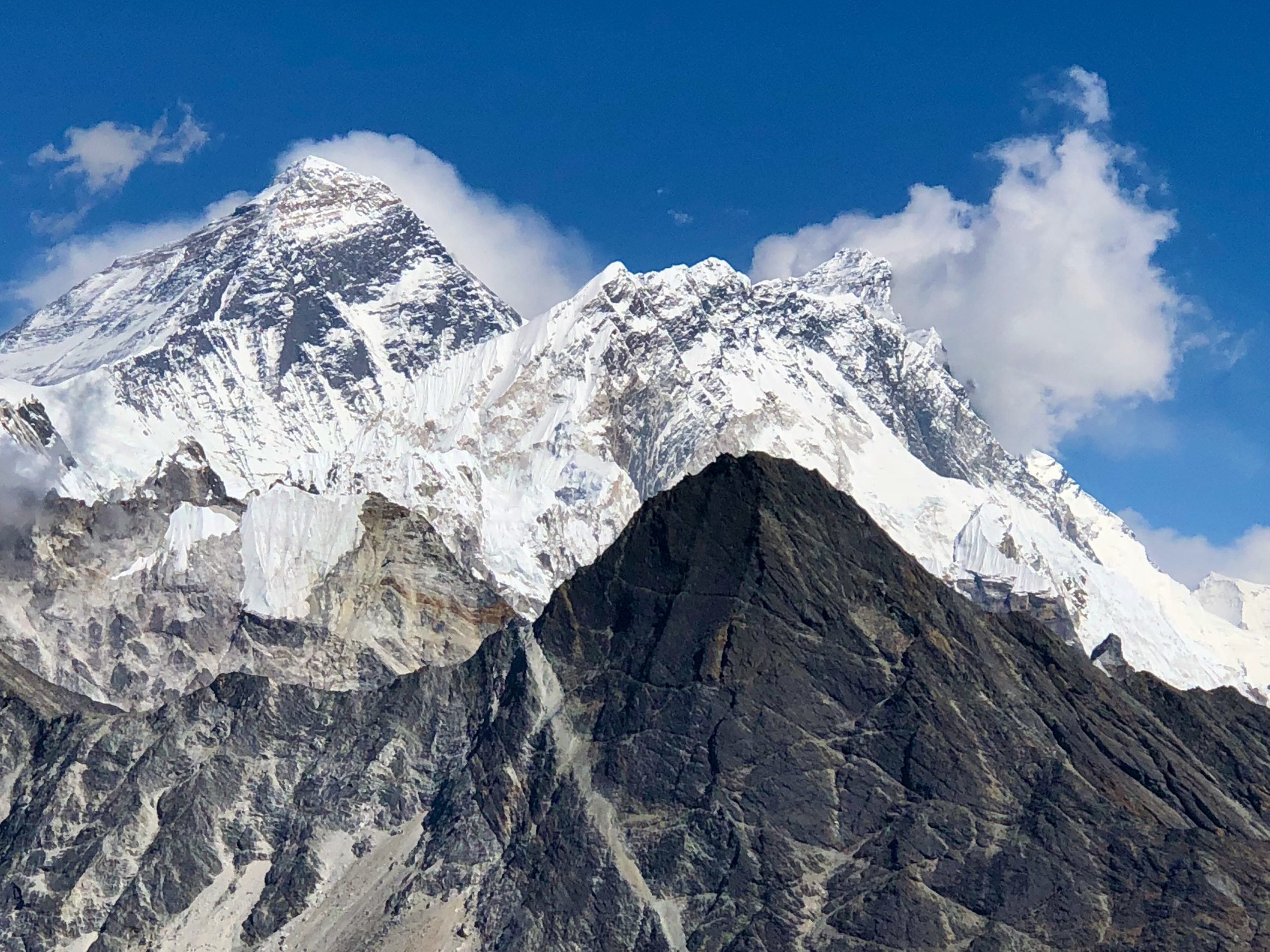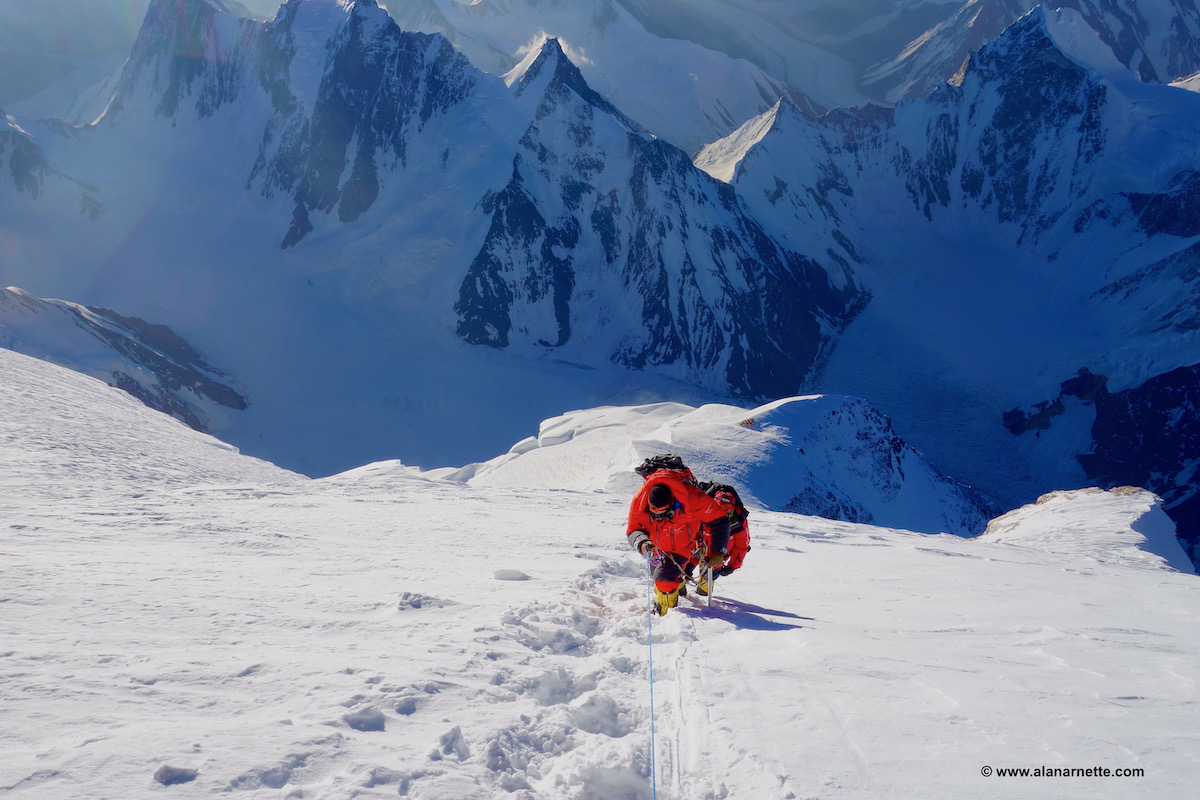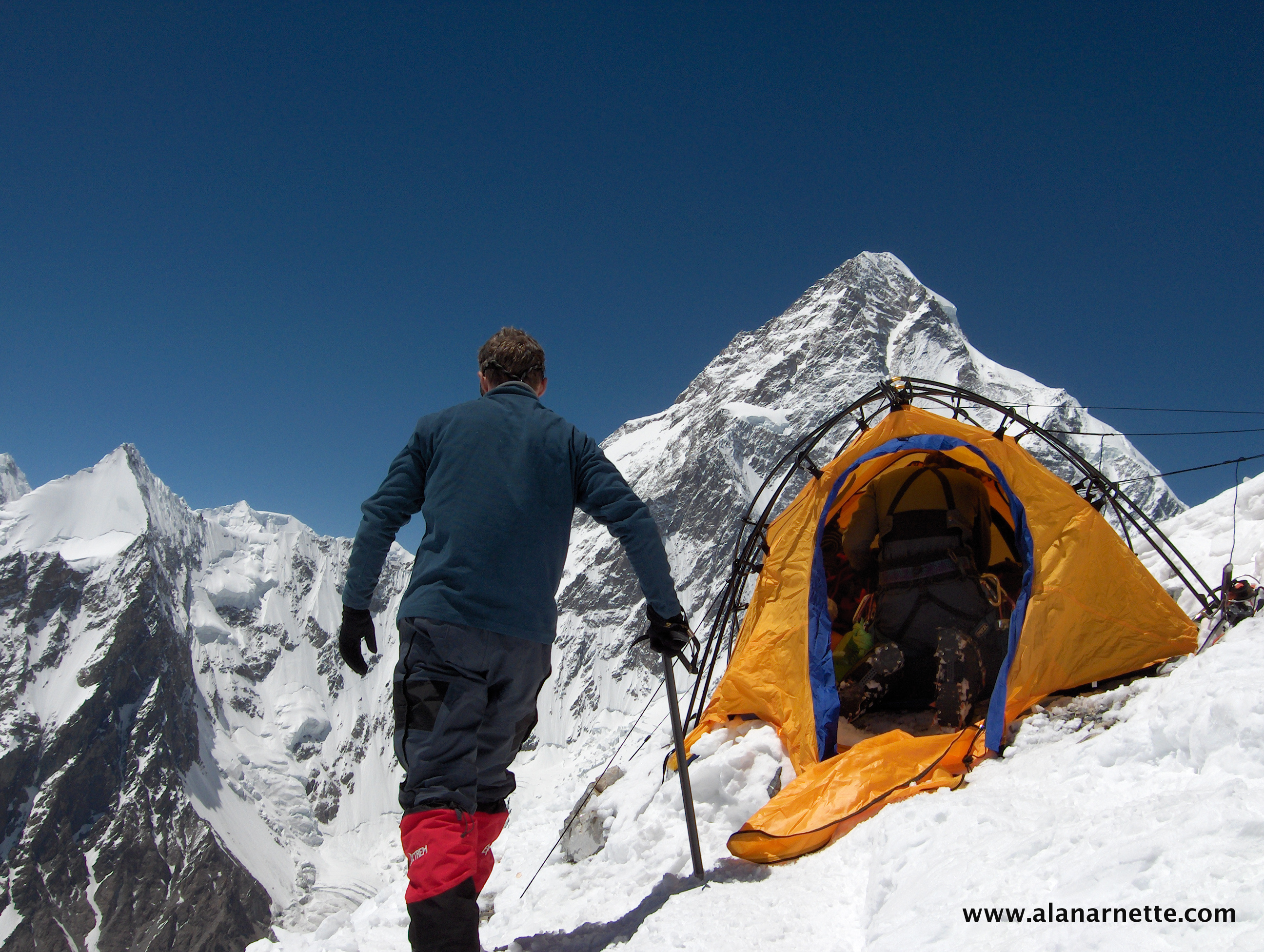Now that China and Nepal have agreed that the revised measurement of Mount Everest is 8848.86-meters or 29,031.69-feet or 33.85 inches higher (no, the mountain didn’t grow that much!), they have to agree on a name.
Measurements vs Growth
Before I get into names, let’s take one more look at this new measurement. Since 2010, Nepal and China have agreed on 8848-meters/29029-feet as the official height of Everest. Scientists estimate Everest increases in elevation about 1mm or 0.03937-inches each year. source This growth comes from the Indian continental plate tunneling underneath Asia’s and lifting the entire Himalayan range.
With the “growth” of 0.04-inches per year, it would have taken 859 years for Everest to have grown 33.85-inches (33.85/0.04) to 8848-meters/29029-feet established in 2010, only ten years earlier. And using the 2005 value by the Chinese Academy of Sciences of 29,017.16-feet/8,844.43 meters, it would have taken 369 years ((29031.69-29017.16)/0.04), 15 years before this year’s measurement. Thus we can conclude that improvements in measurement technology account for the “growth.”
However, if you use the 1955 Survey of India Service’s calculation of 29,029-feet/8,848-meters (snow cap, not rock), then growing at 0.04 inches per year for the last 65 years would have a “growth” of only 2.55-inches. So, the proof is left to the reader i.e. QED.
In any event, Everest has not “grown” 33.85 inches since 2010, but rather the result is a refinement of the measurement if you buy into the entire story. I remain impressed that in 1856 Indian mathematician and surveyor Radhanath Sikdar used basic trigonometry to calculate the height of Peak XV at exactly 29,000 ft. Fearing the round number would be dismissed, an arbitrary two feet was added to the hight thus; 29,002-feet became the official height for decades. In 1955, an Indian survey re-calculated it to be 8848-meters or 29,029-feet.
Names
Now on to what to call this peak. Some in both countries bristle at the name “Everest,” and I don’t disagree with them. After all, the name given to the world’s highest peak was bestowed by the United Kingdom’s Royal Geographic Society in 1865 based on the recommendation of Major General Sir Andrew Waugh, Surveyor General of India. Sir George Everest was Waugh’s predecessor in the post of Surveyor-General or The Great Trigonometric Survey of 1802 to 1852.
According to historians at the University of Michigan, before naming the peak after Everest, British residents in Kathmandu failed to provide what was considered “legitimate” local names, and the suggestions of Gaurishankar and Devadhunga or even the name used in Darjeeling, Deodungha, didn’t find a place.
Countries have every right to name their landmarks, including renaming them as the United States did in 2015 with Mt. McKinley back to the original Athabaskan name of “Denali.”

Tibet – Chomolungma
In the excellent book, “The Great Arc” by John Key, Everest was first spotted by surveyors from Darjeeling, India, over 140 miles away. They initially called it “Gamma” but changed it to “peak b” in 1847. At that time, Kangchenjunga on the border between Nepal and India was thought to be the world’s highest mountain at 28,156-feet.
As The Great Trigonometric Survey continued, “peak b” became “Peak XV” and in 1856 it was officially declared the world’s highest peak at 8839.80-meters or 29,002-feet. It was then, against Sir George Everest’s wishes, that the name Mount Everest was declared for Peak XV. Sir Everest thought all mountains should reflect their local name but Tibet and Nepal were closed to foreigners and local names were unknown or unconfirmed at the time.
However, that wasn’t entirely accurate. Swedish explorer Sven Hedin identified mapping of the Everest region by Buddhist scholars at the orders of Jesuits in Peking in 1717. Later the peak was shown on the French geographer and cartographer D’Anville’s 1733 Asian atlas with the Tibetan name of Cha-mo-lung-ma or Chomolungma, Qomolangma, and Quomolungma, all translated as “Goddess Mother of the World.” In the Sherpa language, it is spelled as Chomolungma.
Also, it seems the indigenous people of the area had a name for Peak XV. The Kirati people, a Sino-Tibetan ethnic group, lived in Eastern Nepal and Northeast India as far back as 16 Century BC. They are believed to be the Himalayas’ original people and thought to have first used the Tibetan name for Peak XV. Another historical people, the Limbu, called it Chajamlungma.
[poll id=”35″]

Nepal – Sagarmatha
Mt. Everest lacked an official name in Nepal until 1956 when the Nepali government officially adopted Sagarmatha, translated as “the Head of the Earth touching the Heaven.” The Hindi rulers in Kathmandu deemed the Sherpa/Tibetan name Chomolungma unacceptable.
The origin of the name, Sagarmatha, is obscure, and we may never know the real story. Baburam Acharya, a Nepalese historian, and literary scholar wrote an essay in the late 1930s where citing locals in the Everest area calling the peak Sagarmatha or Jhomolongma, also spelled as Jhyamolungma. In an essay, he wrote:
In a map of Nepal published by the then Survey of India Office, the name of the Himalayan Mountain range’s tallest peak was written as Mount Everest. In the map’s second edition, the peak had two names: Mount Everest and the Tibetan name Chomolungma, but there was no Nepalese name. To provide a Nepalese name, especially for the map, an investigative essay entitled as Sagarmatha or Jhomolongma was published in the Sharada, a Nepalese-language monthly.
The King of Nepal and other Royal rulers disagreed with the name for unknown reasons and almost banned Acharya from the Kingdom. Later, Acharya wrote in his book China, Tibet and Nepal: “The name Sagarmatha already existed; I only discovered it; it is not that I christened the mountain with a new name.” source
China – Zhumulangma Feng, Zhu Mu Lang Ma Feng or Mount Qomolangma
It wasn’t until 1952 that Mount Everest was designated Zhumulangma feng (珠穆朗玛峰) on Chinese maps and in textbooks and other publications. In 2002, China launched a campaign to stop Westerners from referring to the world’s tallest peak as Mount Everest and instead start using its official Chinese name, Mt Qomolangma. It didn’t catch on outside of China.
Other Names
Names for mountains are quite varied, ranging from political to indigenous to cultural. These are some examples:
- Ama Dablam means “Mother’s Necklace” in Nepali
- In Tibetan, Kanchenjunga means “five treasures of snow”
- Lhotse is connected to Mount Everest via the South Col and is translated as “South Peak” in Tibetan
- Machapuchare, means “fishtail” in Nepali
- Dhaulagiri comes from the two Sanskrit words “dhavali giri” meaning “White Mountain”
- Manaslu means “mountain of the spirit” in Nepali.
- The name ‘Aconcagua’ potentially came from the Quechuan language, Ackon Cahuak, and Anco Cahuac, which means ‘sentinel of stone’ and ‘white sentinel’, respectively
- Mount Denali came from the native peoples of Alaska, the Athabaskans, and translates as ‘The Great/High One’
- Kilimanjaro’s exact meaning is unknown but is thought to be a mixture of the Swahili and Kichagga languages to mean white mountain
- Elbrus translated from Arabic as ‘white mountain’
- Vinson Massif in Antarctica is named after the U.S. State Georgian congressman Carl G. Vinson for his support for Antarctic exploration
- Puncak Jaya, in New Guinea, was named Carstensz Pyramid by Dutch explorer Jan Carstensz, in 1623. When Indonesia took control of the province is located in the 1960s, they renamed it Puncak Jaya. The name was first changed to Puncak Soekarno after the president of Indonesia but was later changed to Puncak Jaya, Jaya meaning ‘victorious’ or ‘glorious’
- Mount Rainier was named on May 8, 1792, by Captian George Vancouver after his friend Rear Admiral Peter Rainier
So, back to Peak XV
Ok, now that we have quite the selection and national interests, what to call the world’s highest peak? I guess it comes down to nationalism, and since it lies on the border of China and Nepal (and the U.K. has no say in this matter today!), it’s really up to them.
However, there is a precedent for who claims a peak. France and Italy have been arguing over Mont Blanc since the 1700s!
What are the chances of the global adoption of a new name? Tiny to none in my estimation. I predict Nepal will launch a well-publicized public relations campaign to name Peak XV Sagarmatha, and it will be mostly ignored but will accomplish the same objective they always have, to see their names in the press. Meanwhile, China will continue using both Qomolangma and Zhumulangma Feng within China. Add the rest of the world? Mount Everest.
Of course, when Tenzing Norgay Sherpa summited Peak VX, he called out “Thuji chey, Chomolungma” So perhaps the decision has already been made!
Climb On!
Alan
Memories are Everything





4 thoughts on “What’s in a name: Everest, Chomolungma, Sagarmatha?”
Well, Mount Everest might not be indigenous, but it sounds better. At least to me.
The title Chomolungma means Goddess countryside mother, meaning the goddess of the Khumbu countryside not the earth. The Tibetan term Chomolangma refers to the goddess Miyolangzangma by a derivitive of her name. Goddess lang (shortform of her name) mother.
Wow! Very interesting on the history of Everest’s measurements. Well done!
Thanks Alan. Have a wonderful holiday if we don’t have any new information to read before then.
Comments are closed.